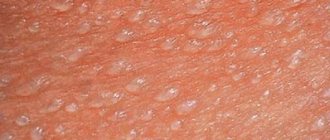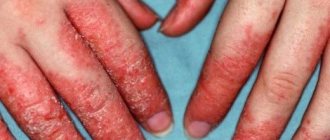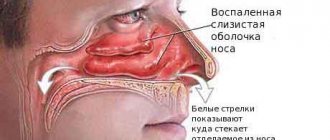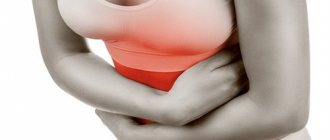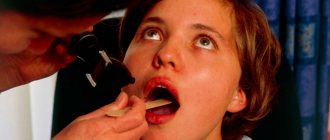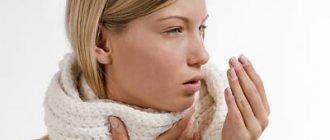Do you often have a stuffy nose and constantly want to sneeze if the apartment has not been wet cleaned for at least one day? Perhaps we are talking about an allergy to household dust. Joinfo.ua will tell you why it occurs and what tests need to be taken to confirm the diagnosis.
Causes of dust allergies
Dust consists of microparticles that break off from different compounds. Street water differs from home water because it consists primarily of soil minerals. In cities, they are supplemented by bitumen and gravel contained in asphalt on roads, combustion products and plant components. The latter include fungal spores and pollen.
Household allergies manifest themselves not only to microparticles brought from the street. House dust, which is 6 times more toxic than substances from the street, can also trigger the development of allergies, since dirt, volatile substances from burned gasoline and particles of pet skin settle in the home.
All this is reinforced by pathogenic microorganisms that multiply in dusty places.
The following types of house dust are identified that cause household allergies:
- Paper: often found on toilet paper and money.
- Contained in waste products of pets: dander and hair, sweat and saliva.
- Construction: cement dust, caustic substances in paints, whitewash and sawdust that remain in the apartment after renovation.
- Pyroglyphid mites: live in pillows, blankets and between carpet fibers.
- Bookstore: volumes of old books on the shelves of the home library (collecting dust from the streets).
- Plant: fungal spores and pollen.
All microparticles enter the respiratory tract along with the air. The respiratory system is covered with sensitive ciliated epithelium, so it immediately reacts to potential allergens. An inadequate immune system response develops: immunoglobulin E is produced, swelling and rhinitis occur.
Allergy to dust mites
Insects feed on the dead stratum corneum of the skin, the scales of which remain on all surfaces of the apartment. As a result, dermatophagoid mites try to settle closer to the food source:
- pillows;
- blankets;
- carpets;
- stuffing upholstered furniture and toys.
In 1 g of dust ball a colony of up to 10,000 pests can develop, but most often their number does not exceed 100 pieces. So many insects will not cause harm to the body if the immune system is functioning normally. But for allergy sufferers, 10 mites are enough, which periodically change the exoskeleton and leave excrement on the bed linen. When inhaling their waste products, swelling of the nasopharynx develops, lacrimation and allergic rhinitis begin.
The negative immune response is caused by the ingestion of protein contained in insects. Proteins are highly active, therefore they are mistakenly regarded by immunocompetent cells as a threat - a pathogenic agent.
Eczema or allergic dermatitis
Usually the provocateur of this disease is a food allergen, but dust can also provoke attacks due to the abundant content of all kinds of microbes and bacteria in it.
Eczema appears as an itchy rash on any part of the body. Constant scratching causes symptoms to worsen. Ulcers begin to form and become covered with a flaky crust. If such signs of dust allergy are detected, it is necessary to minimize contact with it. The doctor usually prescribes a suitable ointment for treatment.
The skin around the affected part is dry. The progression of this type of allergy can trigger the development of skin dermographism. To determine it, you need to apply a ruler to the surface of the skin and press it a little, then remove it; if the skin remains white for more than 20 seconds, then you have allergic dermatitis.
How is it developing?
Regardless of the type of dust, an allergic reaction develops according to one algorithm:
- a potential allergen (dust, particles of cement, cellulose) enters the respiratory tract;
- microelements penetrate into the bloodstream through the alveolar capillaries and from the pulmonary circulation into the large circulation;
- substances circulate through the vessels, they are caught by immunocompetent cells and begin to be captured;
- during the immune response, antibodies damage the body’s own units - mast cells containing histamine, it is released into the blood and triggers the process of inflammation;
- swelling provokes lacrimation, runny nose, and skin rashes.
Causes
The complex of substances present in dust contains various chemical components, particles of waste products of animals, insects and other allergens.
Substances found in dust that cause allergies.
- Entering the house from the street. Particles of soot, cement, construction waste, plant pollen, various microorganisms (bacteria and viruses), fragments of soil, bitumen, gravel, mold spores.
- Waste products of animals and insects. Fragments of animal skin and hair, saliva, sebaceous gland secretions, feces. The main allergens are foreign proteins of the upper layer of skin and saliva that are attached to their fur. Dried excrement of insects - cockroaches, spiders, flies, ants, etc. also cause hypersensitivity of the body.
- Fragments of cellulose found on paper pages, microparticles of washing powders, paint peeling off furniture, varnish.
- Mites (dermatophagoid and pyroglyphid). Microscopic arachnids. 150 species have been found in ordinary house dust. Mites themselves are not dangerous, but their waste products, fecal pellets, are strong allergens. Parasites are localized in pillows, mattresses, blankets, upholstery, and carpets. The main purpose of mites is to process dead human skin, after the breakdown of which allergenic enzymes are released. Ticks survive in conditions that are comfortable for human existence. This is humidity - 50-60% and air temperature - 20-25ͦС.
The listed allergens are stable, microscopic in size, water-soluble, and volatile (during the cleaning process they can hover in the air for up to 20 minutes).
Symptoms and signs of dust allergies
Allergy to dust in infants rarely develops in the presence of a hereditary predisposition.
There are 5 main types of allergies in adults, which differ in their clinical picture. It is impossible to determine the type of negative immune reaction in advance, since it depends on the number of potential allergens in the dust coma.
The area where they end up also plays an important role. These places include mucous membranes, respiratory organs or skin. A child may develop several types of allergies at once.
Dust allergies can take a chronic form. Exacerbations develop when an allergen enters the body, and in its absence, a stage of remission occurs.
Allergic conjunctivitis
Causes swelling of the mucous membranes of the eyes, occurring in mild, moderate or severe form. Allergic conjunctivitis is accompanied by:
- Redness of the conjunctiva. Small vessels become clearly visible on the whites of the eyes, and hyperemia of the sclera is observed.
- Increased tear production. Histamine causes irritation of the lacrimal sac, resulting in the production of large amounts of fluid.
- Inflammation and redness of the eyelids. Due to swelling, the eye partially closes.
- The appearance of Horner-Trantas spots. These are yellowish dots that develop against the background of keratoconjunctivitis. In this case, the skin around the eyes turns pale due to the outflow of blood.
- Swelling of the face. Occurs only in severe cases of allergic conjunctivitis or Quincke's edema.
In 95% of allergy cases, both eyes are affected.
Allergic rhinitis
Develops in 85% of people with allergies. Characterized by the following symptoms:
- frequent sneezing;
- itching in the nasopharynx and nasal passages;
- swelling of the mucous membranes;
- discharge of clear fluid from the nose;
- congestion that develops after contact with dust.
Symptoms of rhinitis are relieved at night, due to the release of hormones with anti-inflammatory properties. Mostly after 20:00, the production of cortisone and hydrocortisone is observed, which relieve swelling and nasal congestion.
If, instead of clear liquid, purulent yellow-green exudate begins to flow, this indicates the development of an infection in the paranasal sinuses.
Atopic dermatitis (eczema)
The skin is affected gradually. The allergy is chronic and manifests itself in childhood from 5 to 12 years. The following clinical picture is observed:
- Severe itching. Occurs during an exacerbation period. The severity of the symptom increases during contact with dust, under stressful conditions, or when chemical irritants come into contact with the skin: salt, acetic acid, ethanol.
- Dryness. Histamine causes swelling of soft tissues, which increases and compresses the vessels in the subcutaneous fat. As a result, epithelial cells do not receive the necessary oxygen and nutrients in sufficient quantities. The production of sweat and sebum decreases, and the skin dries out.
- Swelling of the lips, development of cheilitis.
- Peeling, formation of trophic ulcers. At the age of 9-12 years, wet ulcers begin to appear on the skin, causing pain and discomfort. After 15-18 years, they are accompanied by abundant peeling.
- Dermographism. The symptom is checked using a ruler - it is pressed against the eczema and waited for 20 seconds. In allergic dermatitis, white spots do not go away within 120 seconds due to compression of blood vessels.
At the age of 12, ulcers form more often in the joint area, on the face or lower leg. In older people, eczema spreads to the back of the head, neck, upper limbs and chest.
Hives
Diagnosis of urticaria is carried out during an external examination of a person. The pathological process is accompanied by the development of the following symptoms:
- Blisters of different sizes. Around the tumors, the skin turns red, irritation and severe itching begin. They disappear on their own within 24-30 hours.
- Inflammation and periodically manifested hyperemia. The lesion is characterized by pain and does not itch. Swelling goes away within 72 hours.
- The appearance of spots on the skin. They come in red and brown colors. When scratched, the skin swells and fills with fluid.
Hives develop quickly as a result of large amounts of allergen entering the body. Relapse occurs rarely.
Angioedema
Clinical picture:
- increased skin temperature, redness;
- development of urticaria.
The pathological process develops over several hours or days. With hormonal therapy with glucocorticosteroids, symptoms disappear within a day.
Allergy treatment methods
It is important to understand:
If you do not start it on time, then the symptoms of a dust allergy may well get worse. For example, rhinitis can develop into bronchial asthma.
Treatment is carried out in three areas:
- Eliminating or minimizing contact with the allergen;
- Drug therapy;
- Measures to improve immunity;
The first direction is the fight against dust in the house and relates more to the prevention section, which will be covered.
First aid: how to deal with lung spasms
An attack of suffocation (bronchospasm) due to allergies develops quite rapidly. The patient experiences difficulty breathing. Shortness of breath is accompanied by wheezing with characteristic whistling sounds. The algorithm for providing first aid to an allergy sufferer is approximately the following.
- Immediately stop the patient's contact with the allergen.
- Reassure the patient. The success of treatment depends on this.
- Place the victim on a chair “astride” (facing the back of the chair), place a pillow under the chest. In this position of the body, the lungs make breathing movements most easily.
- Provide fresh air.
- Use an inhaler with a bronchodilator (Bricanil, Salbutamol).
- Give the allergy sufferer an antihistamine tablet (Tavegil, Diazolin, Claritin).
- Good anti-asthmatic drugs are Ephedrine or Eufillin. It is advisable to give an injection, since the tablets begin to act after 40 minutes.
- Be sure to call an ambulance.
Medicinal methods
Photo: Rinsing the nose with saline.
Drug therapy is quite varied. The drug and the medication regimen are prescribed by the attending physician, since uncontrolled use of medications can only worsen the state of health.
When prescribing medications, it is necessary to take into account factors such as concomitant diseases, pregnancy or lactation. Antihistamines can be prescribed as a last resort to a pregnant or lactating woman under the strict supervision of a specialist.
- Dust allergy pills such as Cetrin, Claritin and other antihistamines will help to quickly relieve allergy symptoms.
- In addition to tablets, the doctor will prescribe nasal drops or eye drops to relieve conjunctivitis and/or allergic rhinitis. For nasal medications, these are, for example: Nasonex, Avamys. Nasal drops such as Salin and Aquamaris are safe even for pregnant women and babies.
- It is recommended to rinse your nose as often as possible. This can be done with saline solution or special preparations - AquaLor, etc.
How long can I take Zyrtec if I have a dust allergy?
Doctors recommend taking Zyrtec until allergy symptoms disappear (allergic rhinitis, sneezing, cough, conjunctivitis). The duration of therapy for acute allergic phenomena is 7 - 10 days.
For frequently recurring attacks of allergies, as well as for seasonal allergies, the course duration is from 20 to 25 days, followed by a break of 2 to 3 weeks
When describing methods of treating allergic reactions, special attention should be paid to ASIT - allergen-specific immunotherapy. The main difference between this method and all others is not in eliminating the manifestations of the disease, but in combating the origins of its occurrence.
The technique consists of gradually introducing small doses of the allergen into the patient’s body. The body's sensitivity to allergens gradually decreases. The result of this is long-term remission and a decrease in the number and strength of allergic reactions. ASIT is carried out in relation to a specific allergen in house dust.
The possibility of carrying out is determined by an allergist. Children undergo therapy from the age of 5 years.
What happens if allergies to household dust are not treated?
If you ignore allergy symptoms, hoping that they will “go away on their own,” or, worse, take medications uncontrollably, the symptoms can become chronic or develop into a more serious illness. For example, bronchial asthma.
Folk remedies for treating dust allergies
Treatment with folk remedies does take place, but it is important to remember that this will only be symptomatic therapy, and it is not always effective. Before using these methods and means of treatment, you must agree with your doctor.
Let's consider several methods from the field of traditional medicine that will help you get rid of unpleasant symptoms:
- To irrigate the nasal cavity in case of allergic rhinitis, a tincture of calendula flowers is helpful. One teaspoon of flowers is poured into a glass of boiling water, cooled and filtered.
- A regular solution of table salt will also help get rid of allergic rhinitis (dissolve 1/3 of a teaspoon of salt in a glass of boiled water)
- A compress using a decoction of cornflower flowers will help get rid of allergic conjunctivitis. One teaspoon of flowers is poured into 0.5 cups of boiling water and left for 20 minutes.
- Eucalyptus oil will help quickly kill dust mites. Before washing, soak the items in water for half an hour with 2-3 drops of eucalyptus oil added.
Alternative medicine
Hirudotherapy for dust allergies takes place, but only in the absence of pathology of the blood coagulation system, hypotension and anemia, as well as pregnancy. In general, this treatment method can increase the overall resistance and tone of the body, but will not affect the pathochemical processes of allergies.
Speleotherapy will also be useful.
How to treat dust allergies with homeopathy?
Before starting treatment with this method, it is important to know that their clinical effectiveness is not supported by serious research.
The basic principle of treatment used by homeopathic doctors is “knocks out a wedge with a wedge.” This is nothing more than using very small (“homeopathic”) doses of the allergen to treat the patient.
The peculiarity of homeopathic medicines is that they do not accumulate in the body and do not produce side effects. The selection of drugs is purely individual. Homeopathy helps the body cope with allergies on its own.
Unlike herbal medicine, which uses medicinal plants, homeopaths use plants, minerals and even toxic substances to make medicinal products.
Examples of homeopathic remedies:
- Luffel. Made from liana-shaped herbaceous plants. Helps well against allergic rhinitis.
- Rhinitol-edas. A drug for allergic rhinitis based on chamomile, onions and lumbago herb.
- Karsat-Edas. The medicine contains oats, bearberry, echinacea, charcoal and arsenic.
- Cinnabsin. Tablet antiallergic drug based on goldenseal, echinacea, as well as minerals (potassium dichromate and red mercury sulfide). Eliminates the symptoms of allergic rhinitis and sinusitis.
When prescribing a particular drug, the homeopathic doctor takes into account the individual characteristics of the body, as well as other existing diseases.
Diagnosis of the disease
The examination is carried out in several stages:
- Anamnesis collection. The patient is asked about complaints, symptoms that appeared and the time when they appeared.
- Clinical blood test. Eosinophils are counted. In case of allergies, their number exceeds 0.3 × 109/l. ESR rises to 15-25.
- Allergy tests. Substances containing potential allergens are applied to the skin of the back. After this, the development of the reaction is observed. If hyperemia, blisters and inflammation appear, the test is considered positive. Tests are not carried out if there are signs of infectious skin lesions on the back and during periods of exacerbation of allergies.
Allergy tests are carried out in 3 ways:
| Name | Method of implementation | Features of the allergy test |
| Prick test | The forearm is disinfected with medical alcohol, and 1 drop of various allergens is applied. The skin is punctured 1 mm through the liquid. The test result is positive if redness with a diameter of 3 mm or more forms around the puncture. | It is used in 95% of cases and is considered the safest method. It does not allow large amounts of allergen to enter the body, and false symptoms do not occur. |
| Scarification | The back or forearm is disinfected and the skin is scraped off. A drop of allergen is applied to each scraping. When the skin becomes swollen or red, the test is considered positive. | Used when for some reason it is impossible to perform a skin prick test. The risk of developing false symptoms is about 15%. |
| Appliqué | The skin is wiped with alcohol, and a potential allergen is applied without scraping or puncturing with a needle. The reaction is recorded after 10 minutes. | Used to diagnose the etiology of moderate to severe atopic dermatitis. |
If there is no response to special tests, a provocative test is performed. To carry it out, a potential irritant is applied to the lesion:
- with rhinitis on the ciliated epithelium in the nose;
- with allergic conjunctivitis on the mucous membrane of the eye;
- for food allergies in the oral cavity.
The test is carried out only in the presence of an allergist who has the skills to assist with the development of anaphylactic shock.
How to properly collect dust samples for a doctor?
To submit dust particles for laboratory analysis, you must adhere to the following algorithm:
- Collect dust from curtains and furniture. Do not touch the floor surface.
- To collect samples from the floor, use a vacuum cleaner capable of picking up microparticles. 1 tsp is enough for analysis.
- The collected dust is sifted through a sieve and placed in a sterile container.
How to distinguish allergies from colds?
Most people confuse the symptoms of allergies and colds due to the similarity of the clinical picture:
- runny nose;
- cough and sneezing;
- headache;
- chest compression.
A cold occurs when the body is overcooled. If symptoms develop after cleaning the house and are accompanied by itching, burning, and rashes, this means an allergy. When going outside, the symptoms weaken.
In case of an infectious disease, thick yellow mucus is released from the nose. In case of allergies, clear liquid flows. In this case, pathology occurs regularly in the presence of dust. Cold symptoms disappear within a week.
Diagnostics
Diagnosis always begins with a thorough examination by your doctor or allergist. The doctor should ask the patient in detail about his daily life, identify symptoms and periods of their deterioration. The nose is examined to look for redness or swelling on the inside.
This is most often followed by a skin allergy test, after which you can determine what type of irritant you are hypersensitive to. In very rare cases, if the patient suffers from a dermatological disease, a blood test is performed that looks for specific antibodies to various allergens, including mites.
Prognosis and prevention
To prevent the development of allergies, you need:
- reduce contact with the allergen;
- clean the house (wet);
- ventilate the apartment in the morning and evening;
- replace bed linen, carpets and mattresses with synthetic products;
- undergo a preventive examination with an allergist 2 times a year;
- undergo a course of specific immunotherapy.
With adequate treatment with antihistamines, the prognosis is favorable.
Which mattresses are best for dust allergies?
Latex products are considered the best option. This is a durable material that is not susceptible to tick infestation.
Among the more affordable options you can purchase mattresses:
- made of artificial latex;
- with foam;
- with padding polyester content.
Which vacuum cleaners to choose?
For allergy sufferers, vacuum cleaners with a HEPA filter are suitable, which traps dust microparticles and does not throw them back into the air.
You can also buy vertical types of vacuum cleaners that have a water or fabric micromesh filter.
Which blanket to choose?
It is recommended to purchase products with the following types of filler:
- silicone;
- holofiber;
- fluff of swans.
The duvet cover is chosen from natural materials.
What can replace carpet?
Carpets on the walls are thrown away because they collect a lot of dust. Flooring products can be replaced with bamboo mats, synthetic or silicone pads.
A little about the causes of household allergies
The allergenic activity of house dust is mainly due to the household mites it contains.
These are microscopic (0.3 mm), invisible to the naked eye, arthropods that live in bedding, old furniture, old books, carpets, etc. Allergies are caused by both living individuals and their scales.
The optimal temperature for the growth and reproduction of ticks is 21-28 degrees Celsius, humidity 70-80%. The microclimate in bedrooms is most favorable for the development of mites. The maximum number of mites is detected in mattresses. The main source of food for ticks is desquamated epithelium of humans and animals, food debris, molds and yeasts.
An exacerbation of allergies to house dust mites usually occurs during the heating season (late autumn-winter and early spring), when the room temperature remains stably within the above limits.
When you are allergic to household mites, sometimes a cross food allergy occurs (with manifestations on the skin and throat). In this case, the following symptoms occur: rashes on the skin, itching, sore throat when eating crustacean seafood (shrimp, crabs, crayfish, lobsters, etc.). This requires the allergy sufferer to follow a special diet that excludes the consumption of seafood.
Choosing the right mattress and blanket
Hypoallergenic mattresses, blankets and pillows exist, and their use makes the life of an allergy sufferer much easier. The main thing is to know how to choose them.
First, pay attention to latex mattresses. They do not accumulate dust and are not attracted to ticks and other insects.
If the price of such a mattress is not affordable for you, then pay attention to artificial latex, which is also hypoallergenic, but costs less.
Mattresses with fillings made of holcon, padding polyester, coir, and foam rubber will be cheaper. But the latter quickly loses its shape, and if it is not of high quality, it begins to crumble after a while.
For allergy sufferers, clothes and pillows with silicone, holofiber (eco-fiber), synthetic down, synthetic ball, with natural and artificial swan down, bio-pillows made from buckwheat and eucalyptus are perfect.
Choose covers for such products from natural materials. Avoid synthetics.
Do not use pillows and blankets made from:
- Feather.
- Sheep and camel wool.
- Pooh.
Preventive measures
- Carry out wet cleaning of the premises as often as possible.
- Wipe off dust daily with napkins made from modern materials (microfiber, viscose and polyester).
- Carpets must be cleaned at least once a week with a vacuum cleaner equipped with a modern HEPA filter. The filter needs to be changed 4 times a year.
- Replace voluminous curtains with blinds.
- Stick to minimalism in your home decor. A large number of knickknacks contributes to the accumulation of dust.
- Change bedding as often as possible. Wash it in very hot water: this will kill dust mites.
You can always protect yourself from a new attack. It is important to follow preventive measures to help reduce the risk of the disease and its symptoms. Preventing dust allergies:
- daily wet cleaning (preferably 2-3 times a day);
- carpets, curtains, old upholstered furniture - all these are collectors of dust, reduce them to a minimum in your home, radically resolve the issue with the interior;
- change bed linen at least once every 2 days;
- Iron and wash all items well;
- buy special devices that help humidify the air;
- instead of a regular broom, use a vacuum cleaner with an aqua filter, it perfectly cleans all the dirt from the carpets and humidifies the air;
- get rid of stuffed animals, artificial flowers and lots of pillows.
Ventilating the room is a must. Perform the ventilation procedure several times a day. It is especially good to open windows in frosty and humid weather. Additionally, you need to lead a healthy lifestyle, try to walk in the fresh air more often and improve your immunity. In addition, it is important to exclude from the diet foods that increase dust allergies. Treatment also involves the use of personal hygiene and cleaning products that do not contain chemical dyes and preservatives.
One of the popular methods for curing dust allergies is a course of specific immunotherapy. Typically, this procedure is recommended for patients who regularly take allergy pills and suffer from sudden attacks.
The essence of the method is the gradual introduction of the allergen in a minimum dosage with its gradual increase. Over time, the body gets used to this substance, and the immune system stops reacting so strongly to it. The course of treatment is long and lasts at least two years. But the result is worth it. Thanks to specific immunotherapy, you can achieve:
- reducing the frequency of attacks (sometimes it is possible to ensure that symptoms cease to appear altogether);
- reducing the risk of cross-allergy (preventing an increase in the number of provocateurs);
- prevention of the development of severe manifestations (for example, when allergic rhinitis becomes the cause of bronchial asthma);
This approach reduces the need for regular use of antihistamines and removes a person’s dependence on constant drug treatment. And only by completely getting rid of allergies can you re-experience all the joys of a carefree life.
Now you know what to do if you are allergic to dust. But remember that each organism is individual, and not all of the drugs described above are universal. So only your attending physician can choose the most effective and safe therapy.
Like other diseases, allergies are easier to prevent than to treat; to do this, you should take care of the condition of your home:
- remove carpets, carpets, fur capes and bedspreads, heavy curtains - all objects that accumulate dust;
- give preference to pillows and blankets made of synthetic materials and fillers (bed mites prefer to live in feather and wool products, which are very difficult to process);
- Wash bed linen once a week at a temperature not lower than 60 °C;
- regularly ventilate the home and carry out wet cleaning;
- regulate the temperature and humidity in the room (the optimal temperature for ticks is 25 °C and humidity above 70%);
All of the above must be observed throughout the year, paying special attention to the prevention of allergies in the spring. It is at this time that the proliferation of parasites intensifies.
If a person suffers from house dust, it is recommended to change bed linen more often (about once a week). You need to wash your clothes in hot water, and it is best to iron them thoroughly.
The house needs to be wet cleaned more often and the rooms need to be ventilated. When washing floors, you should add special additives to the water to get rid of mites.
House dust allergy symptoms will decrease if:
- Remove feather pillows from the house;
- Replace fabric curtains with blinds;
- Give preference to inflatable or water mattresses;
- Remove all carpets.
In case of allergies to paper dust, it is recommended to store all books and documents on closed shelves. It is important to clean books from time to time with a vacuum cleaner and treat them with special anti-parasite products.
bezallergii.info
To relieve both a child and an adult from the negative symptoms that manifest themselves as a result of the action of dust mites, it is necessary to take a number of preventive measures:
- Remove all furs and carpets.
- In the place of permanent residence (especially of a child), daily wet cleaning and ventilation should be carried out.
- To strengthen the immune system, morning exercises are recommended. If your baby is allergic to dust (including wood dust), preventive measures alone are not enough.
For allergies, special drug treatment is carried out and a hypoallergenic diet is prescribed. It is important to consider that the symptoms of the disease, both in adult patients and in children, can be influenced by heredity. In this case, the likelihood of developing an allergy in an infant increases several times.
Preventive control against dust mites and further treatment should be carried out comprehensively, in close cooperation with folk remedies. Sometimes treatment can take several years.
Who should I contact if I have allergies?
The patient needs to see an allergist . It should install:
- Duration of unpleasant manifestations.
- Symptoms that have arisen.
- Their intensity.
- The nature of allergic reactions.
- Presence of chronic diseases.
- Taking medications.
- Heredity.
Allergy to household dust
Currently, three methods of allergy testing are known:
- Immunological analysis.
- Skin allergy tests.
- Provocative tests.
Why is dust dangerous?
Dust allergy is a response of the human body to the most common allergen, present in large quantities in every home: house dust.
Symptoms of its manifestation are increased sneezing, runny nose, and lacrimation. Owners of a home library should be aware that it can pose a serious health hazard if the occupant of the apartment is allergic to paper dust.
Dust accumulated on the spines and pages of books can contain microscopic mites and false scorpions, which are almost impossible to destroy. The pages of books can develop mold. There is a known case where an allergy to book dust caused the death of a library worker.
The symptoms of an allergic reaction in this case are as follows:
- sore throat;
- annoying runny nose;
- tears from the eyes.
Extreme manifestations of allergies can be angioedema, anaphylactic shock, or an attack of bronchial asthma.
Therefore, your home library needs care: books must be wiped with a clean cloth, vacuumed once every 3 months and stored in glass cabinets.
Library and archive workers must protect their respiratory system with a respiratory mask and use disposable gloves.
Types of allergies
Currently, two types of dust components are known. It is divided:
- For household or home use, which does not extend beyond the premises. House dust includes particles of human activity. It is believed that household allergies cause less intense symptoms than industrial allergies.
- Industrial or street, which includes emissions from factories, accumulation of exhaust gases, and atmospheric dirt.
Allergy to dust in a child symptoms
All types of dust base differ significantly in their composition. But the symptoms that worsen a person’s condition have the same feature. Also, common symptoms of dust are very similar to the symptoms of allergic reactions to flowers and pollen. In 90% of cases they appear in the spring.
Allergy symptoms may manifest differently in patients of different ages. Spring allergies are eliminated with the help of medications that should be taken at a certain season of the year.
“Occupational” allergies are also known, which manifests themselves in patients working in production. Allergies, which cause various diseases, can manifest themselves in the flour-grinding and baking industries. Flour allergies are difficult to eliminate, as such particles cause severe itching and redness. Allergies often occur in people associated with livestock farming. Such dust may contain particles of skin and hair from livestock. An allergic reaction to construction dust is possible. Workers may also suffer from allergies to coal, concrete or wood dust.
Types of dust allergies
Other types of dust allergies
Unfortunately, it's not just house dust that can cause sneezing, coughing or choking. In environmental conditions, there are quite a lot of provoking factors that complicate the identification of the true cause of attacks. Other types of dust are characterized by the same symptoms as in other cases.
Construction dust
Construction dust is a whole periodic table that attacks the immune system. In addition to the above symptoms, an allergy to construction dust can also cause severe dizziness and fainting. With constant contact with harmful substances, persistent inflammation of the respiratory tract develops. And if no action is taken, over time this leads to bronchial asthma.
If you discover an allergy to cement dust or other types of construction mixtures, the only correct solution is to change your occupation. After all, the basis of any treatment for dust allergies is to avoid contact with the allergen. And without a change of place of work, complete isolation is impossible.
Attention! If you are planning to renovate your apartment, take care in advance of where you and your household can wait out the whole process. Upon completion of all work, be sure to carry out 2-3 wet cleanings before returning.
Book dust
As you know, books are a source of not only knowledge, but also allergies. Allergies to book dust can be so severe that even deaths have been reported in the library. The fact is that the pages of books contain a huge concentration of mites and other microorganisms. They develop and multiply directly between bindings and sheets of paper. Moreover, dead microorganisms pose an even greater danger to humans. Indeed, during the process of decomposition, they release various poisons and toxins that are dangerous to humans with constant contact.
Allergy to paper dust occurs mainly when a person is constantly in contact with old publications or a large number of books. This is a library, work in antique stores or archive rooms. Disposable gloves, respiratory masks and careful care of book publications can to some extent protect a person from the influence of book mites and other dust particles. But in reality, all these precautions are not observed, and over time, a person may begin to experience symptoms of an allergy to library dust.
Wood dust
Workers in sawmills, furniture workshops and representatives of other professions that are in one way or another connected with wood processing are most susceptible to such a disease as an allergy to wood dust. Not all types of trees can cause a response from the body. Most often, attacks are provoked by oak, chestnut, red cedar, sequoia and some types of birch. Other types of trees can also provoke allergies, but they are rarely used in the woodworking industry.
At first, the allergy sufferer’s condition improves upon returning home. But over time, the allergen accumulates in the body, and then attacks occur not only during the working day, but around the clock.
Important! The cause of an allergic reaction may not be the wood, but the fungus living in it.
First aid for pulmonary spasms
If you are allergic to dust, bronchospasm is possible. It manifests itself as shortness of breath, difficulty breathing with whistling, heaviness in the chest, and blue discoloration appears around the mouth. The consequences can be dire, including suffocation.
In case of pulmonary spasm, first of all it is necessary:
- Call an ambulance.
- Reassure the patient.
- Open all windows in the apartment and provide fresh air.
- Protect from the allergen if the attack is caused by the latter.
- Place the patient in a sitting position facing the back of the chair, unbutton his collar, remove foreign objects (things) from his neck - necklaces, tie, etc.
- Place a soft pillow under your chest.
Depending on the causes of bronchospasm:
- For anaphylaxis, give an injection of adrenaline.
- For allergies, inject Suprastin (Tavegil) intramuscularly. If there are no drugs in ampoules, then give them in tablet form. You can also take Zyrtec, Citrine, Blogir 3, Zodak, Claritin, Eden, Diazolin and others.
- To relieve spasm of the bronchial muscles and expand their lumen, use inhalers Atrovent, Berotek, Berodual, Ventolin, Seretide (bronchospasmolytics).
- If the effectiveness of the latter is low, use Pulmicort, Beclazone (inhalation with glucocorticosteroids).
- All further actions should be carried out by doctors, who should already arrive by this time.
Other treatments
Recently, ASIT therapy has shown good results, but the course of treatment will take from 2 to 5 years.
This method has shown itself to be effective in the treatment of seasonal hay fever, the nature of which is very similar to our disease.
The treatment takes place under the strict supervision of a doctor. Diagnosis and identification of the main allergen-provoker plays a very important role here. Read more about ASIT therapy here.
ALT method. Developed in 1993 at the Moscow Medical Academy named after. Sechenov.
The essence of the method is to restore normal immune function and reduce the patient’s sensitivity to allergens.
To do this, the patient's own blood is taken from which autolymphocytes are obtained. The latter are administered through the skin or endonasally.
The course of therapy lasts three to four weeks and is designed for 6-8 procedures. The method is contraindicated for children under 6 years of age.
What is house dust?
Strictly speaking, there is no such thing as dust. What we call dust is a mixture of a wide variety of microscopic particles. It can contain tiny scales of human epithelium, pet hair, pieces of food, pollen, textile fibers from linen and clothing, excrement of rodents and insects, spores of mold and yeast fungi, bacteria and even living creatures - microscopic dust mites of saprophytes.
Their size is only from 100 to 300 microns. Saprophytes feed on dead scales of human skin. And since a person “sheds” about 2 kg of such particles per year, ticks live just fine in our apartments. Mites feel best in mattresses, pillows and bedding.
About 300 million of these insects feed on a typical double bed. A mattress that has been used for more than three years consists of 10% dead and living mites, as well as their waste. However, they live not only in the bedroom. Dust is their home, and in 1 gram of dust from any corner of the apartment there are at least 300 of them. Waste products of saprophytes are the main cause of dust allergies and bronchial asthma.
About 80% of asthmatics are sensitive to mites. The worst thing is that ordinary vacuum cleaners are practically powerless against them. Primitive mechanical filters trap large dust particles, but microscopic mites easily pass through them and scatter throughout the apartment. That is why after cleaning with a vacuum cleaner, people suffering from dust allergies feel even worse.
However, the 20% who are not sensitive to mites still suffer from dust. Dust particles damage the walls of the alveoli, disrupting the immune barrier. This opens the way for infections and allergens.
Dust allergy symptoms
Allergy to dust manifests itself in different ways, however, all its symptoms are clearly visible and extremely unpleasant.
Rhinitis
Almost everyone is probably familiar with the symptoms of a dust allergy. The most common symptom is allergic rhinitis, which used to be called “hay fever.” This is not a particularly serious disease, but it can pretty much ruin your life. Sneezing, clear nasal discharge, itching and burning sensation in the nasopharynx, headache, lacrimation - all these are signs of allergic rhinitis.
It starts with a slight tickling in the nose and develops into continuous painful sneezing. Over time, allergic rhinitis can develop into asthma. It can be caused by almost any allergen - animal dander, mold, even some foods. But the main culprit is still the same - dust.
Upon contact with an allergen, the reaction can be immediate. But it can also be slow. This reaction usually occurs with constant contact with the allergen. You can crawl into a dusty closet and not feel any discomfort. And after a few hours you already suffer from rhinitis, not understanding what caused it.
Conjunctivitis
Another common symptom of dust allergies is conjunctivitis. 15% of the total population have encountered this problem at least once. This condition is characterized by redness of the whites, a burning sensation and itching in the eyes. The eyelids become swollen and red, and the eyes constantly water.
In some cases, vision itself suffers - objects look “blurry”. Conjunctivitis is especially difficult for those who wear contact lenses. In the worst case, conjunctivitis can result in severe damage to the cornea.
Asthma
Rhinitis and conjunctivitis are extremely unpleasant diseases that significantly worsen well-being and quality of life. However, bronchial asthma is the most dangerous. Allergic asthma is its most common form. Every 12th resident of Russia suffers from it. And, as doctors note, there are more and more patients.
As soon as the allergen enters the respiratory tract, the immune system begins a war with the alien. The muscles of the respiratory tract contract sharply. And the airways themselves become inflamed and filled with thick mucus. An attack of allergic asthma begins with a painful dry cough. Breathing becomes rapid, labored and wheezing. There is shortness of breath and a feeling of heaviness in the chest. Often the attack is accompanied by panic.
Asthma is very dangerous, especially for young children. In the most severe cases, even death is possible. Unfortunately, very often asthma is mistaken for bronchitis and ineffective treatment is prescribed.
What to do if you are allergic to dust?
If all these symptoms are most pronounced at night or in the morning, and practically disappear outside the house, then the cause of the illness lies precisely in house dust. An allergist can prescribe treatment. But it will not have an effect if you do not fight the root cause of the disease - house dust.
And it is very difficult to cope with it. Conventional vacuum cleaners, as already mentioned, do not bring any noticeable benefit - they only visually make the house cleaner by removing visible dust. But their filters are not able to trap allergens.
Moreover, the dust bag itself becomes a breeding ground for allergens - the number of saprophytes and spores of harmful fungi in it simply goes off scale. To combat dust allergies, daily wet cleaning is necessary, ideally using a good vacuum cleaner with a HEPA filter designed specifically to combat allergens. Premium vacuum cleaners, as described in this video, often come with additional accessories for humidifying and freshening the air.
This is especially important if there is a lot of textiles in the house - curtains, carpets, furniture with fabric upholstery, soft toys. If possible, it is better to replace fabric curtains with blinds, textile upholstery with leather, and feather pillows and blankets with synthetic ones.
It would also be a good idea to get special hypoallergenic covers for all bedding. Pillows and mattresses need to be replaced every few years. Bed linen should be washed every 3-4 days, and curtains - once a week.
Air purifiers with HEPA filters will also make life easier. Remember that dust can hang in dry air for hours without settling. Due to air conditioning and central heating, the climate in our apartments is not much different from the climate of the Sahara. Therefore, you will also need a humidifier.
Allergies are very tricky. This is not a congenital disease; it can appear at any age. Lifestyle changes, stress, illness - all this weakens the immune system and can cause a person who has never suffered from “hay fever” to become an allergy sufferer. If allergies are already ruining your life, you need to see a doctor, only he can make the correct diagnosis and prescribe adequate treatment. All you can do on your own is to try to make your home truly clean and keep yourself and your loved ones healthy.
Source: www.pravda.ru
Pathogenesis
The main allergens contained in house dust enter the body through the mucous membranes of the respiratory system, oral cavity, with food and through the skin.
The immune system, upon initial contact with an irritant, perceives it as dangerous to the body and, as a protective reaction, begins to produce specific IgE immunoglobulins from immune cells. This whole process is called sensitization.
Upon secondary contact, mast cells are already involved in the work, and inflammatory mediators are released. All this is manifested by certain symptoms, which we will discuss below.
But you need to understand that pseudo-allergy can also manifest itself - this is when hypersensitivity to non-protein compounds that are not allergenic appears.
There are early and delayed phases of symptoms:
- The first may appear immediately after contact with the irritant;
- The second one is in a few hours.
Symptoms of the disease
Allergy to household dust has the following symptoms:
- Hay fever (allergic rhinitis). It manifests itself as itching and burning in the nasopharynx, bouts of sneezing, and headaches. Tears flow from the eyes, clear liquid comes from the nose.
The first signs of hay fever begin with an itching sensation in the nose and end with continuous and debilitating bouts of sneezing.
Any allergen can trigger an attack of hay fever, and the main one is house dust. The onset of allergies can be immediate (immediately after exposure to the allergen) or delayed (if the patient is constantly in contact with the allergen that causes the attack). If the outcome is unfavorable, hay fever can lead to bronchial asthma.
- Conjunctivitis. Manifested by a burning sensation in the eyes. They itch and water. The whites of the eyes turn red; The eyelids swell and turn red. At this moment, vision may decrease: the contours of objects seem unclear. The most severe complication of conjunctivitis is ulceration and erosion of the cornea.
- Bronchial asthma. The body's protective reaction when an allergen enters the respiratory tract manifests itself in the form of a dry, debilitating cough and accelerated, difficult breathing, accompanied by a characteristic whistle.
This is explained by the fact that the airways become inflamed and filled with viscous mucus. Characteristic symptoms of bronchial asthma are a feeling of heaviness in the chest and shortness of breath. The patient, experiencing an acute lack of air, often panics. An attack of allergic asthma in a small child can be fatal, so if the baby is diagnosed with an allergy to house dust, it is necessary to urgently treat it.
Adults and children should know what to do and how to act in case of an allergy. Treatment is prescribed regardless of the type of dust. First of all, it is necessary to keep the house clean and try to avoid contact with the source that causes the allergy. How to treat dust allergies?
Treatment with medication is mandatory and not discussed.
In addition, the use of allergen-specific immunotherapy (ASIT) is recommended. It is necessary to combat the disease by all available means in order to prevent progression to angioedema or anaphylactic shock. Allergen-specific immunotherapy does not suppress the symptoms of the disease, but acts against the cause of the body’s inadequate reaction. ASIT will help get rid of or minimize the occurrence of the disease.
Important! Immunotherapy is the administration of an allergen by subcutaneous injection. Treatment regimens can be short-term or long-term, it all depends on the person.
Treatment with folk remedies should begin immediately after the onset of symptoms. It is recommended to take decoctions of herbs such as bearberry, spurge, tartar, mint, lily of the valley flowers, juniper, parsley, oak bark. Egg shells and mumiyo are also useful. Treatment at home will get rid of dust forever if you prepare it correctly and take infusions and decoctions in a timely manner.
- Take 100 g of crushed nettle leaves, pour 300 ml of boiling water. The product is infused for three hours. Take 100 ml three times a day.
- The herb is brewed as tea and drunk 3 times a day. Add 1 tsp to 200 ml of boiling water. plants. Leave for 15 minutes, take 1 glass at a time for 3 months.
- Dried dandelion heads in the amount of 100 g, pour 500 ml of boiling water. Infuse the product for 10 hours, drink half a glass before meals 3 times a day.
- Brew 1 tbsp in a glass of water. l. sage Gargle with the resulting decoction and rinse your sinuses from mucus.
- Pour 100 g of chamomile with a liter of boiling water. Simmer over low heat for 15 minutes. When the product has cooled, wipe your eyes. The medicine must be used 3 times a day. Chamomile decoction relieves redness, itching, swelling and irritation from the eyes.
In addition to medicines and folk remedies, Komarovsky offers homeopathy treatment. Doctors recommend using Edas, Cinnabsin, Iricar, Iodized sulfur and other remedies.
The main cause of dust allergies is the feces of dust mites, as well as their decay products. They contain a large number of allergens - by inhaling invisible “neighbors”, you can experience serious allergic symptoms.
The question arises, why is dust equally accessible to everyone, but not everyone suffers from allergies?
Scientists have identified a genetic predisposition to this disease - people's immune systems react differently to the same allergens.
Initially, substances that provoke allergies promote the production of antibodies and the release of large amounts of histamine (a mediator of allergic reactions). After this, the period of external manifestations of the disease begins.
Most often, exacerbations of allergies occur under the following circumstances:
- with prolonged contact with books or being close to them, provided that they have not undergone proper care and cleaning;
- lack of ventilation and wet cleaning in the home;
- frequent use of chemicals;
- an abundance of soft toys, carpets, upholstered furniture in the home;
- infectious diseases of the respiratory tract;
- weakened immune system;
- work activities associated with the accumulation of large amounts of dust.
Even with a hereditary tendency to allergies, a person can experience the first symptoms as an adult. The trigger for a reaction may be:
- stress;
- chronic fatigue;
- lack of sleep;
- change in climatic conditions;
- suffered serious illnesses.
Patients with dust allergies are advised to use a strengthening diet. The following is removed from the diet:
- roast;
- smoked;
- fast food;
- marinades and hot sauces;
- chips, crackers;
- semi-finished products;
- sweet carbonated water;
- energy and alcoholic drinks.
The menu should be diversified with healthy vegetables, fruits, and cereals. Eating fresh herbs, celery, tomatoes, and currants is perfect. As well as foods rich in vitamin C:
- rose hips;
- red bell pepper;
- kiwi;
- sea buckthorn;
- honeysuckle
How it manifests itself
The initial symptoms of the painful condition include psychological depression, fatigue, a feeling of prolonged discomfort in the eyes, throat and sinuses, and headaches.
Such symptoms are typical for all types of allergies. If you are intolerant to construction dust, there are also more specific symptoms that are characteristic of this type of allergy.
- First of all, the eyes of an allergic person are affected, the person feels constant discomfort, the eyelids swell, lacrimation and itching begin, the whites become cloudy or red, and conjunctivitis may subsequently develop.
- Unpleasant sensations appear in the nasal sinuses, accompanied by swelling, discharge of liquid mucus, uncontrollable sneezing, which leads to severe headaches.
- There are unpleasant sensations in the larynx, a sore throat, thick sputum and swelling. Over time, an incessant cough begins, severe shortness of breath, heaviness in the chest, and difficulty breathing.
- In some cases, rashes are observed, the skin looks inflamed, the body itches, and becomes covered with red, scaly spots.
- With severe allergies, dizziness, surges in blood pressure, and loss of consciousness are possible.
Treatment options
Allergy to dust is a serious illness. Can it be cured? Unfortunately, a cure for this disease has not yet been invented, since the reasons why the body reacts painfully to certain allergens have not yet been established.
- Avoiding contact with substances that cause an allergic reaction.
- Drug treatment.
An allergy medicine, by regulating the functioning of mast cells, helps reduce the production of histamine, which eliminates allergic manifestations. Third generation antihistamines (Zyrtec, Erius), produced in the form of drops and tablets, are used to treat allergies of all types.
- Immunotherapy (allergen-specific). The action of this method is as follows: the patient’s body is accustomed to the allergen by introducing it by subcutaneous injection. Each time the dose of the administered drug increases. The process takes up to 5 years. If one allergen is present, the patient can be cured.
General information
Dust allergy by hypersensitivity reactions of the immune system upon interaction and repeated contact with an exoallergen , in this case with household, construction or other types of dust. ICD-10 was assigned code T78.4 as unspecified allergies or allergic reactions without additional instructions, ATC allergen - V01AA03 House dust allergens.
Pathologies of the immune system are considered quite dangerous diseases that can significantly reduce the quality of life and even put it at risk, because allergic reactions can be expressed in the form of redness, itching , soreness, cough , asthma , and even anaphylactic shock .
The reasons for the failure of the immune system can be many factors, starting from internal - psychological, hereditary and ending with external - environmental and household. But, despite the catastrophic increase in the number of allergy sufferers, this is a problem in the modern urbanized world, where people have forgotten the importance of living in harmony with nature.
Dust is a collection of small solid particles with a diameter of no more than 0.1 mm (larger ones are classified as sand). Ordinary household dust contains predominantly inorganic particles of insect fragments and their excrement, pollen, bacteria, textile, paper fibers, soot, smoke, dead skin, wool, hair, fungal spores and mold. Prolonged contact with dust, weakened immunity and other factors can lead to the development of not only allergic reactions, but also respiratory diseases, including asthma .
For many, allergies are most often caused by the excrement of saprotrophic mites, which live and feed on feathers and other stuffing in upholstered furniture and beds, and dead skin particles, and thus they become residents of every house and apartment. These mites are not carriers of infections and do not bite, but excrement and dead chitinous cuticles are one of the strongest currently known allergens, which causes unwanted reactions of the immune system, the so-called tick sensitization in approximately 40% of the world's inhabitants.
Allergy itself to various types of dust is a manifestation of type I hypersensitivity reactions and excessive activation of mast cells in response to the entry of a specific protein (allergen) into the body. They are mediated by immunoglobulin E and turn into a general inflammatory response - from benign manifestations ( runny nose, cough, itchy skin ) to life-threatening ones, for example, Quincke's edema .
Characteristic symptoms
An allergy to dust is manifested by signs that immediately suggest hypersensitivity:
- The patient begins to sneeze.
- There is severe itching in the respiratory tract.
- Tearing increases.
- Breathing becomes difficult.
- My throat is very sore. I am worried about a cough that lasts for a long time.
- A runny nose occurs throughout the year and is not eliminated by nasal sprays.
- Performance decreases, concentration is impaired, and headaches often occur.
Gradually, manifestations are added to the allergic reaction:
- Allergic conjunctivitis. The eyes turn red, the eyelids swell, and there is constant itching. Sensitivity to light appears for a while and vision is impaired.
- Urticaria and dermatitis. The skin becomes covered in rashes, blisters, itches severely, and the body and face turn red.
- Bronchial asthma. The patient coughs heavily and suffers from asthma attacks. This is the most serious problem that develops under the influence of house dust. Attacks occur under the influence of saprophytes or dust mites. For nutrition, they need scales of dead human skin, after processing which they secrete tangles. These substances are very light, so they quickly end up in the air and penetrate the respiratory tract, promoting inflammatory reactions.
Increased sensitivity to dust is often mistaken for colds. Since with these problems a person suffers from coughing, runny nose and sneezing. An allergic reaction can be distinguished by the following:
- with a cold, the condition returns to normal within a week, and with allergies, a runny nose and cough will bother you for much longer;
- if the manifestations occurred while cleaning the house, then this means that the person is allergic to house dust;
- After going outside, my health improves.
In these situations, you need to visit an allergist and get examined.
The problem may appear in a child before he is one year old. Parents can learn about sensitization by rhinitis, conjunctivitis and rashes on the surface of the skin. Young children with allergies suffer from:
- Frequent runny nose, which occurs several times a month.
- Worrying attacks of dry cough that are not relieved by expectorants. The cough is especially severe at night.
- Unreasonable crying and sleep disturbances are observed.
- Appetite worsens. The functions of the digestive system are upset.
If a child feels better when visiting the street, this indicates intolerance to house dust.
Allergy to dust has very unpleasant symptoms in childhood and adulthood. The danger of the problem is that bronchial asthma gradually develops.
Folk remedies
If there is heavy discharge from the nose, you can rinse its cavity with a solution of soda or salt . Use a small spoon of soda or salt per liter of water.
Using a small teapot, a large syringe or a special device, you can rinse your nose after waking up.
Decoctions that improve immunity and reduce inflammation are widely used They can ease allergies:
- St. John's wort,
- pharmaceutical chamomile,
- dandelion roots,
- birch leaves.
You can make decoctions either individually or from a mixture of dry herbs. To do this, pour boiling water over a spoonful of raw materials, infuse and take a glass twice a day .
Before using traditional medicine for allergies to house dust, you should definitely consult a doctor - herbal medicine often causes allergies itself.
What can cause an allergic reaction in everyday life?
Let's look at this issue in more detail. So, the development of the disease can be provoked by:
- Household dust . This is the most common of its types. The air we consume during breathing contains tiny elements - dead skin epithelial cells, hairs, particles from various fabrics and clothing, textile coverings of furniture, as well as various chemical compounds. However, most often dust mites can provoke the development of the disease in humans.
- Dust from old books . Where there are a large number of books (bookshelves, home libraries), a large amount of it can accumulate. All this is due to the fact that the spines of books and pages are actually a repository for allergens, as well as mold, which can also cause illness. This can happen if you don’t read or wipe books for a long time.
- And finally, construction materials , which contain many chemicals that can cause an allergic reaction. This allergen appears in apartments where renovation work is underway.
